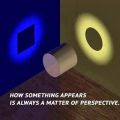The Self....And The Five Aggregates...
 Shoshin
No one in particularNowhere Special Veteran
Shoshin
No one in particularNowhere Special Veteran
: ~Walpola Rahula~ ( from "What The Buddha Taught"
Aggregates are of five types
(1) Aggregates of material body or form, derived from the four basic material elements. These aggregates include:
eye <= contact with => visible forms (sights)
ear <= contact with => audible forms (sounds)
nose <= contact with => odors
tongue <= contact with => tastes
body <= contact with => tangible forms
mind <= contact with => mental objects
Note that mind is a faculty (a sixth “sense”). It is not an owner of other aggregates, nor a self.
(2) Aggregate of sensations – pleasant, unpleasant, or neutral feelings experienced through contact of physical and mental organs or faculties with forms (external or internal).
Pleasure, pain, and neutral feeling are due to contact of five senses and mind with objects. The mind is not a spiritual substance, not a Cartesian thinking thing (no duality of matter and spirit). The mind is an organ or faculty that sees mental objects or thought objects. Mental objects are based upon experience of visible, auditory, tasty, odorous, and tangible forms.
(3) Aggregate of perceptions: not feeling, but recognition of objects. Depends upon contact between organs and objects.
(4) Aggregate of mental formations, volitional acts. There are fifty-two of these. See list. These are the locus of karma. These are volitional acts or acts of will (such as willing, intending, deciding, determining, wanting) which set things into motion (such as through body, speech, or thought). These are the initiators and the engines of continuance of the momentum of samsara.. (See pp. 22 - 23) See handout about karma and how it works. Karma is action which produces more actions and reactions. Action and reaction is the cause/effect nexus of conditioned states.
(5) Aggregate of consciousness: “Consciousnesses” are phenomena of awareness that arise in association with sensation, perception, volition, etc. There is no such thing as “consciousness itself.” Each consciousness arises due to and associated with the other aggregates. Consciousness depends upon contact between internal faculties or organs and their internal or external objects. Consciousness depends on the other aggregates and has no independent existence.
Note on anatman: No permanent, unchanging, individual soul or spirit. Ego or self is itself a mental construct or mental formation, due to illusion or wrong belief that there is an “owner” behind the aggregates, “an unmoved mover.”
Constant flux: coming to be/ passing away, emergence/disappearance of conditioned states or compounds. Rising and falling of sensations, perceptions, volitional acts, acts of consciousness. Impermanence. The end of one is the cause of the beginning of another.
The idea of the self is a mental formation, a false idea that arises from the working together and interdependence of the five aggregates. Idea of the self is a volitional act, an act of will. It arises from the illusion of attachment to sensations, perceptions, mental formations, and thoughts. We think in terms of my body, my mind, my feelings, my hopes, my dreams, my ideas, my opinions, my beliefs, my salvation, my liberation, my nirvana. This is a matter of trying to grasp and hold on to (or own). The key to all bad karma is selfish striving to get, to keep, to get rid of, to continue, to increase.
Life is movement, process. There is no thinker behind the thought. Thoughts come and go as birds appear and disappear in the sky. Clinging to thoughts is like wanting to catch the birds, keep them, bind them. My philosophy, my religion, my way of life.
Stream of becoming, flux, process of thirst/craving/hankering/chasing/seeking without beginning in time. Seeing things as they are means seeing them for what they are – conditioned states, insubstantial, fleeting, impermanent. This “characteristic” of reality does not jar one who is enlightened, calm, serene, detached (smiling).
Aversion, repugnance, and hatred are “unskillful” or “immoral” mental formations (volitional acts). Aversion to suffering is an unskillful act. One should not hate suffering or become impatient with it. That is a reaction that only leads to more suffering.
Alan Watts "The Self"
Sam Harris "The Self"
Krishnamurti - The Self
Double double toil and trouble.... From the five aggregates "I" arise...





Comments
I wonder about the distinction between mind and consciousness.
Is it saying that mental objects are the contents (thoughts, feelings, imaginings) and consciousness is the phenomenal experience of them? Like the mental objects are the reflected objects in a mirror and consciousness is the mirror itself?
And then it makes me think about the way current scientific and philosophical thinking conceive of how consciousness arises.
That agrees with the Upaya sutta:
But the sutta distinguishes between engaged and disengaged consciousness.
Engaged
Disengaged
Other suttas in the Khandha Vagga of the Samyutta Nikaya make similar points, such as SN 22.3, SN 22.54 and SN 22.87
Thanissaro’s translation of SN 23.2 has this pragmatic note:
I think it's useful to utilize the concept of the five aggregates as a means of analyzing the way we create a sense self in relation to/via craving in an effort to help see this process and remove the vast net of clinging that gives rise to suffering as long as we don't in turn reify them and construct a self out of them. I see the aggregates as more of a strategy to end suffering than concrete realities.
When identification to form, feeling, perception and thoughts are abandoned, what is left is the identification with the knower/experiencer or consciousness itself.
I'm aware that "I am" not permanent....but I often 'think' I am
Especially when I'm happy, but then this too is just a scam
This also goes for when I am feeling sad, feelings come and then they go
There is something I can't quite put my finger on, that always seems to know
I know the feelings won't last... but I often think they will
It is an interesting phenomenon when it comes to what and how I feel
The mind is often tricked into 'thinking' that some things are true
Perhaps they're just illusions for the ego to live through!
There's a sense of fluctuating knowledge (knowingness) that there is no permanently abiding self pulling the strings, but the aggregates continue to act as though there's a puppeteer...a permanent string puller
Maybe it's just the self-generating puppet master called Karma ...who knows ???
...who knows ???
Mara is the puppet master.
“...... Suppose, monks, a magician or a magician's apprentice should hold a magic-
show at the four cross-roads; and a keen-sighted man should see it, ponder over it and
reflect on it radically. Even as he sees it, ponders over it and reflects can it radically, he
would find it empty; he would find it hollow; he would find it void of essence. What
essence, monks, could there be in a magic show?
Even so, monks, whatever consciousness -be it past, future or present, in oneself
or external, gross or subtle, inferior or superior, far or near - a,monk sees it, ponders
over it and reflects on it radically. And even as he sees it, ponders over it and reflects on
it radically, he would find it empty; he would find it hollow; he would find it void of
essence. What essence, monks, could there be in a consciousness?2......"
Form is like a mass of foam And feeling-but an airy bubble.
Perception is like a mirage And formations a plantain tree.
Consciousness is a magic-show, A juggler's trick entire.
All these similes were made known By the 'Kinsman-of-the-Sun."
S. III 142.
The brain's magic uses not only misdirection and slight of hand but real-time, revisionist history too. Perception as a mirage is more a reality than a simile. This 16 minute video dissects some of the brain's visual and temporal tricks.

If the brain is doing that with what we believe we see, how reliable is anything else it says?
The Self Illusion - Susan Blackmore

I remember reading one of her books on "Consciousness" a few year ago and found it quite interesting
We identify our bodies through our senses. What happens when those senses get fooled and identify inanimate objects as self?